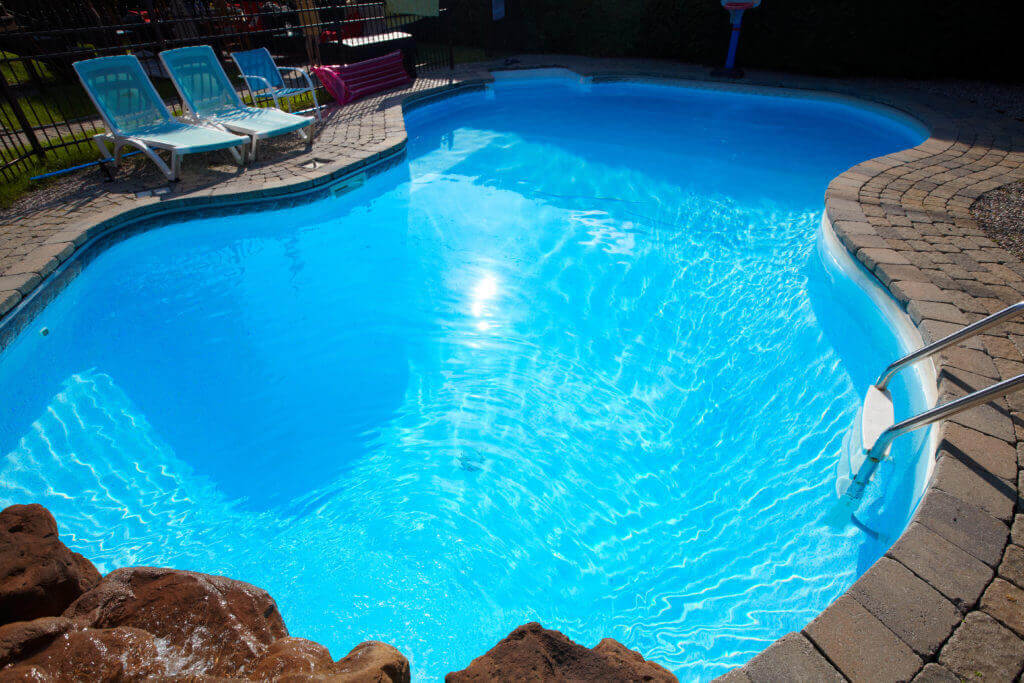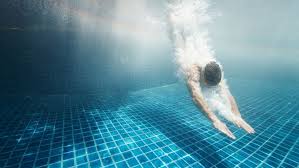"Is it really necessary to disinfect my swimming pool? Can't I just keep it clean with a good filter and regular skimming?"
If you've ever asked yourself these questions while staring at your murky pool water, you're not alone. As a pool owner, I used to wonder the same thing until a rather unpleasant encounter with what my doctor politely called "recreational water illness." Let me tell you, nothing will make you a believer in proper pool disinfection faster than an unexpected trip to urgent care after a refreshing afternoon swim in your backyard oasis.
The Hidden World Beneath the Surface
Your beautiful backyard pool is more than just a refreshing retreat from scorching summer days. It's also, unfortunately, a potential breeding ground for microscopic party crashers that are all too eager to join your swim session. And trust me, these are not the kind of guests you want at your pool party.
Over time, swimming pools accumulate various contaminants introduced by swimmers, including micro-organisms from infected individuals, body oils, sweat, cosmetics, suntan lotion, urine, saliva, and fecal matter. Gross, right? But let's keep it real here—where there are humans, there are human... contributions. Research estimates suggest that swimming pools contain, on average, 30 to 80 mL of urine for each person who uses the pool. That's about a shot glass full per swimmer, folks!
Why Your Filter Isn't Enough
"But I have a top-of-the-line filtration system," you might protest. While filtration is certainly essential, it's only half the battle. Your filter works wonders removing larger debris and some organic waste, but those microscopic bacteria, viruses, and parasites? They're slipping through like VIPs at an exclusive club.
Two distinct and separate methods are employed in the sanitation of a swimming pool. The filtration system removes organic waste on a daily basis, while disinfection kills infectious microorganisms. Think of filtration as sweeping your kitchen floor, while disinfection is the mop that comes afterward to actually sanitize the surface.
The Real Risks of Skipping Disinfection
Before you dismiss pool maintenance as merely aesthetic, consider what happens in undisinfected pool water:
- Recreational Water Illnesses (RWIs): These include gastrointestinal issues, skin infections, ear infections, respiratory problems, eye irritation, and in rare but serious cases, brain-eating amoeba infections. Yes, that's a real thing, and it's as terrifying as it sounds.
- Algae Blooms: Once algae gains a foothold, it's extremely difficult to eliminate and can make your pool unusable.
- Bacterial Biofilms: These slimy colonies can form on pool surfaces and are highly resistant to normal cleaning methods once established.
- Poor Water Quality: Cloudy, smelly water that nobody wants to swim in defeats the whole purpose of having a pool.
Modern Disinfection Options: Beyond the Chlorine Stigma
Many pool owners hesitate at the thought of disinfection because they immediately picture red eyes, bleached swimsuits, and that distinctive "pool smell." But here's a plot twist for you—that smell isn't actually from chlorine itself!
The interaction between disinfectants and pool water contaminants can produce a mixture of chloramines and other disinfection by-products. Trichloramine, which forms when sweat and urine react with chlorine, is what produces that characteristic "pool smell." So ironically, that chemical smell indicates there's not enough chlorine, not too much!
Today's pool owners have more options than ever beyond traditional chlorine tablets:
1. Salt Water Systems
With a salt system, a regenerative process converts salt into a form of chlorine gas that is injected into the water. Through this process, the pool water is converted to a mild saline solution similar to human tears. Many swimmers find salt water pools gentler on skin, eyes, and swimwear while still providing effective sanitization.
2. UV Sanitation
Instead of chemicals, UV light uses a physical process to disrupt the DNA of dangerous pathogens, rendering them harmless. The sanitation takes place in an enclosed chamber inside the pool equipment, where water passes through and is sanitized by powerful rays of UV light. This technology is so effective it's used in medical facilities!
3. Ozone Systems
Ozone is a powerful oxidizer that destroys contaminants without harsh chemical side effects. However, ozone has a short lifespan of only 20 to 60 minutes, depending on the temperature, so a tiny amount of added chlorine is usually needed as a "residual" sanitizer.
4. Advanced Oxidation Process (AOP)
Combinations like UV/hydrogen peroxide or ozone/UV work synergistically for even better results, destroying 99.9% of all pathogens for optimal water quality. These combined approaches represent the cutting edge of pool sanitation technology.
The Xbenbot Solution: Automation Meets Sanitation
This is where the revolutionary Hydro-Puls Robotic Pool Cleaner from Xbenbot enters the picture. While most automated pool cleaners focus solely on removing debris, the Hydro-Puls takes pool maintenance to the next level by supporting your disinfection efforts in multiple ways:
- Enhanced Circulation: The Hydro-Puls creates powerful water movement patterns as it navigates your pool, ensuring disinfectants are thoroughly distributed throughout the water, eliminating "dead spots" where pathogens could multiply.
- Surface Agitation: By constantly disturbing the water surface, the Hydro-Puls prevents the formation of biofilms and increases the effectiveness of chemical disinfectants.
- Pre-Disinfection Cleaning: For daily cleaning, automatic robot cleaners like the Hydro-Puls sweep the basin quite effectively, preparing surfaces for disinfection. By removing organic matter before it can consume disinfectants, your sanitizing chemicals work more efficiently.
- Smart Scheduling: The Hydro-Puls can be programmed to run during off-hours, ensuring your pool is always clean and ready for disinfection, even when you don't have time for manual maintenance.
Creating Your Pool Disinfection Schedule
Maintaining proper pool disinfection isn't a one-and-done deal. For commercial pools, operators should test free available chlorine or total bromine and pH every 2–4 hours while the pool is open to the public. For residential pools, testing should be performed at least 2-3 times per week, and more frequently during heavy use periods or extreme weather.
Here's a simplified residential pool maintenance schedule that incorporates proper disinfection:
Daily:
- Run your Hydro-Puls Robotic Pool Cleaner to remove debris and support circulation
- Check water level and adjust if necessary
- Ensure pump and filter are operating correctly
2-3 Times Weekly:
- Test and adjust chemical levels (pH, sanitizer, alkalinity)
- Check for any visible algae growth
- Empty skimmer and pump baskets
Weekly:
- Shock the pool (oxidize contaminants)
- Brush walls and steps
- Check filter pressure and backwash if needed
Monthly:
- Clean filter thoroughly
- Test calcium hardness and stabilizer levels
- Inspect equipment for leaks or damage
Seasonally:
- Have water professionally tested
- Inspect safety features
- Deep clean any areas the Hydro-Puls can't reach
Beyond the Pool: Household Disinfection Principles
The principles that make your pool a safe place to swim apply throughout your home as well. Just as your pool needs both cleaning AND disinfection, so do your household surfaces.
In your kitchen, bathroom, and high-touch areas throughout your home, remember:
- Clean First, Disinfect Second: Just like your pool, household surfaces need debris and organic matter removed before disinfectants can work effectively.
- Contact Time Matters: Disinfectants need time to kill germs. Read product labels and ensure surfaces remain wet for the recommended time.
- Target High-Risk Areas: Focus disinfection efforts on frequently touched surfaces and areas exposed to bodily fluids or food preparation.
- Ventilation Is Key: Proper airflow helps reduce airborne contaminants and removes chemical fumes during cleaning.
The Bottom Line: Your Health Is Worth It
Let's face it—maintaining proper disinfection takes time, money, and effort. But when weighed against the alternatives—illness, unusable pools, costly remediation—it's a no-brainer.
In order to minimize exposure to pathogens, swimmers should avoid getting water into their mouths and should never swallow pool water. But beyond these personal precautions, proper disinfection remains your first and best defense against waterborne illness.
With modern technology like the Xbenbot Hydro-Puls Robotic Pool Cleaner supporting your efforts, maintaining a safe, healthy pool has never been easier. Your pool should be a source of joy and relaxation, not stress and sickness. Give it the care it deserves, and it will reward you with years of trouble-free enjoyment.
After all, life's too short for unsafe swimming pools. Dive in with confidence!
For more information about the Hydro-Puls Robotic Pool Cleaner and other innovative cleaning solutions, visit Xbenbot.com. Your family's health and safety are worth investing in the best.
External Resources:




Leave a comment
This site is protected by hCaptcha and the hCaptcha Privacy Policy and Terms of Service apply.